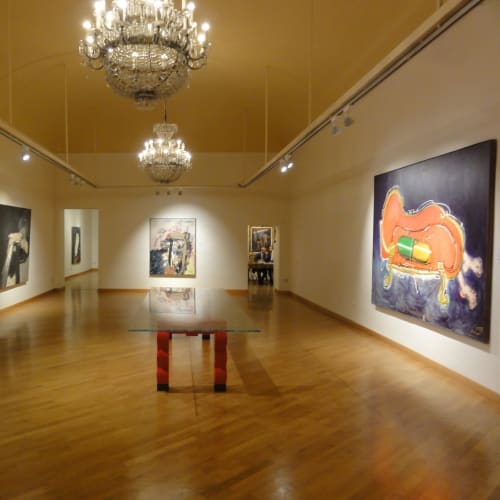Archivio Mattia Moreni g.a.m. is glad to offer in the exhibition spaces of Galleria d'Arte Maggiore g.a.m. a precious occasion to examine in depth the work of the Master, one of the main exponents of the European painters of the second half of the XX century. An artist who lived as a protagonist some of the most important turning points of the last century, from the Informal Art, to the Neo-expressionism to reach, at last, a completely personal style in a surprising and continuous expressive reinvention. An articulate artistic itinerary in which we can recognize a clarity of mind and an active passion that are incomparable and which allowed the artist to always follow, or better anticipate, the changes and the great transformations of our time.
The exhibition at the Galleria d'Arte Maggiore G.A.M. leaves room for the continuous challenge to the pictorial medium, constantly reformed and called into question, taken forward by the artist, underlining some of the most significant moments of his productions: among them, the Informal season and the one of the very wide repertoire of the so-called “humanoids”. With these works the artist makes himself as a spokesperson of one of the most aware and explicit statements on an imminent “regressed” fate that the contemporary society is facing, in defence of the values of nature and body against the aggression and the threats of the computerized society. As Marcel Tapié wrote: “Noone better than Moreni could illustrate with his work the richness of the actual confusion, the immensity of the actualized message of the hidden tragedy of the human condition and at the same time the total freedom of the invention of the espressive structures that are their essential support.”
At the center of the show there is the big canvas “Ah! quel Freud..” (“Ah! that Freud...”), a painting of remarkable dimensions (cm. 200 x 280) of 1997 that owes its great communicative strenght to the subject – an antropomorphized sofa with a giant pill on it – to the colors – strong and bright, spread out in clear color fields painted directly from the color tube – and to the writing that, like in his works of his last period, comes out on the canvas to accompany the visual tale suggesting new causes for reflection.

